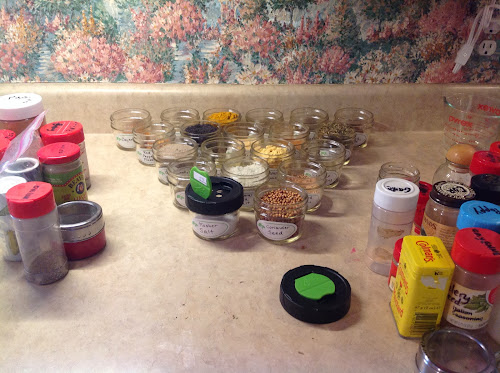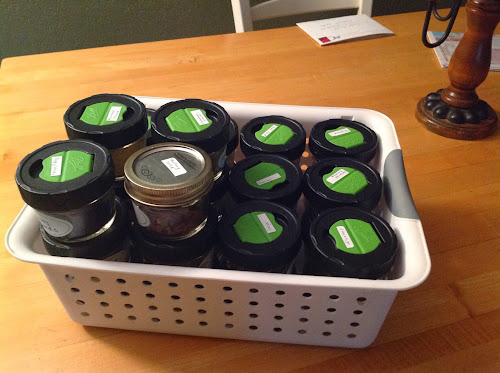First off, ignore the ugly, stained laundry tub. Thanks! Now let's look at my clever little bottle washer.
When you bottle your homebrew instead of kegging it, there are a lot of bottles involved. Lots of bottles. Five gallons of homebrew can fill several cases of bottles, especially if you want to fill some 12 ouncers along with the larger 22 ounce size. To prepare previously used beer bottles for filling requires a couple steps, and the most tedious is washing and rinsing them.
If there are labels, or if a residue of any sort remains inside the bottles, they must be washed with something like Oxy Clean or PBW, a highly effective powdered brewers cleaner. The stuff is like magic, melting the labels right off and stripping the gunk out of the insides. It also doesn't foam much, so rinsing is easier. But the rinsing must indeed happen, and this is where most of the tedium occurs.
You can drop the bottles into a big tub of water and try to get them to sink and fill with clear water. Swirl the water, turn the bottles upside down and watch the water glug glug out. Circle the bottle rapidly to create a whirlpool inside so the water will shoot out quicker, but notice how the centrifugal force also pins the draining water to the inside wall. Is it rinsed enough? Better rinse it again to make sure there isn't any cleaner remaining!
After the 10th time, I knew I MUST have a bottle rinser of some kind and applied myself to coming up with a simple solution. I put together three simple items, two of which I already had, and now I have a very effective rinsing tool.
I bought a brass dishwasher connector from Home Depot. Perhaps because of its wide use, it was about the cheapest fixture on the brass fittings wall at the store, only about three bucks. I used an extra Starbucks straw from a Venti size reusable cup for the tube. The little rim at the bottom of the straw is perfect for holding it in place. Feed the straw through the compression fitting that comes with the connector, and then the nut, and hand tighten it onto the connector.
Use a basic plastic or metal hand-held sprayer that has garden hose threads on the spray end. That will be where you screw on the female end of the dishwasher fitting. The other end of the sprayer will fit on a hose or a laundry tub spigot. What is nice about the laundry tub is that I can easily use hot water, and I don't have to try to figure out how to hold a hose in place.
Turn the water on part way, and just hold the soapy bottle upside down over the straw. squeeze the spray handle and water will shoot up inside the bottle, quickly and neatly draining itself at the same time!





